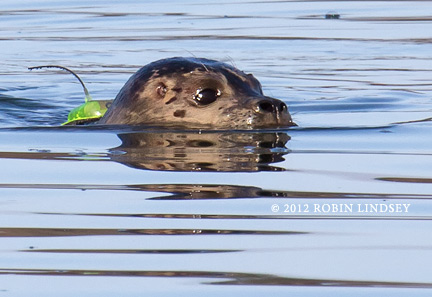Seal pup Sandy released back into the wild
Jan/31/12 05:52 PM
On August 14, 2011, Seal Sitters MMSN responded to a pup in West Seattle that was just a few weeks old and named her Sandy. The pup spent that night on the beach under observation. The next morning, the pup was extremely weak and barely responsive, with numerous infected wounds and no apparent mom. She was severely dehydrated and malnourished to the point of emaciation. Seal Sitters transferred her to PAWS Wildlife Rehabilitation Center for stabilization, treatment and care. On Friday, January 27, after five months of rehabilitation, she was released near a harbor seal haul out in South Puget Sound. Sandy will provide invaluable data to the network.

Every year harbor seal pups that strand and are rehabilitated are released back into the wild. Last year, 10 rehabilitated pups provided novel data on how these animals move post release as compared to wild seals. Sandy, an older rehabilitated weaned pup, will be the first of this age class to be tracked by satellite in Washington State. The video above shows her being fitted with a satellite transmitter and released back home to the Salish Sea.
Sandy’s movements will provide ground-breaking information for biologists. She can be tracked by the public as well on SeaDoc Society’s website, which has a
web page dedicated to her, showing a map of her cruising around South Puget Sound. In the photo above, Sandy swims in the wild with her new satellite hat. Tracking this animal would not be possible without the collaboration of several network groups which include: Seal Sitters MMSN,
PAWS Wildlife Center,
WDFW Marine Mammal Investigations,
SeaDoc Society and
NOAA’s Protected Resources Division.
PUPDATE: Feb 2/2012
We have had some folks with concerns that the satellite tag is somehow harmful for Sandy. The tag is applied with glue to Sandy’s pelt and will fall off when she sheds her fur during molting season in a few months. Most likely, the tag will fall off before then; however, in the interim, the satellite tracking will provide researchers with insights into foraging patterns, distances travelled by weaned pups and health and mortality data. This research will help other seal pups in the future.
Tags: Sandy, rehabilitation, release, satellite tag








